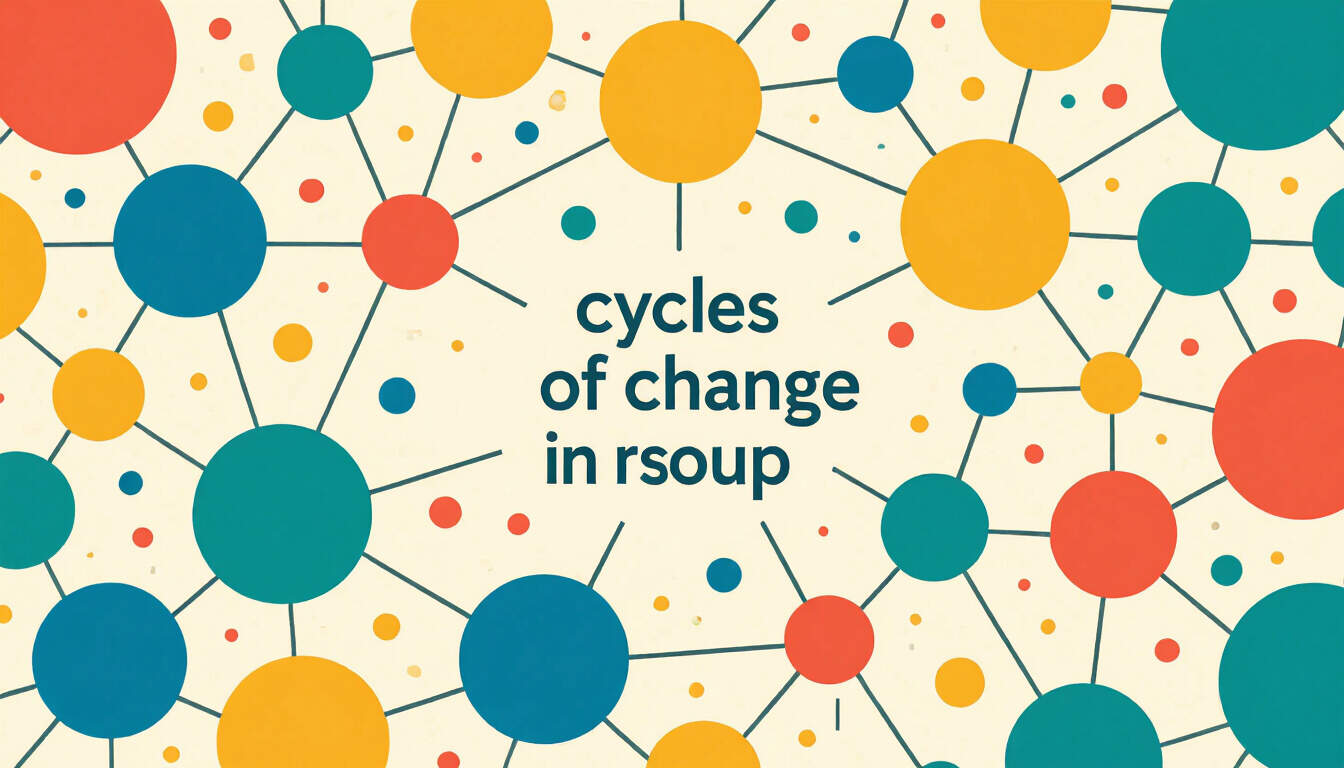Feedback Loops and Second-Order Thinking in Organizational Change
 by Marlene Keeling
by Marlene Keeling
Feedback loops drive organizational change by creating cycles of reinforcement or correction. Second-order thinking helps anticipate wider effects, aiding professionals in decision-making. This article examines these concepts for better systems thinking and personal growth.

Feedback loops form the core of many organizational dynamics, influencing how changes unfold over time. In organizations, these loops can either amplify effects or stabilize systems, making them essential for effective management.
The Basics of Feedback Loops
Feedback loops occur when outputs from a process influence future inputs. For instance, in a business setting, employee performance reviews can create a loop where positive feedback leads to improved efforts, while negative feedback might prompt adjustments.
In organizational change, feedback loops often determine success. A positive loop might involve successful projects boosting team morale, which in turn enhances productivity. Conversely, a negative loop could see declining sales reducing investment, further harming performance.
Types of Feedback Loops in Organizations
There are primarily two types: positive and negative. Positive loops reinforce change, potentially leading to exponential growth. For example, a company introducing new technology might see increased efficiency, encouraging more innovation.
Negative loops, on the other hand, aim to maintain balance. If a team overworks, burnout could reduce output, signaling a need for rest. This type of loop helps organizations avoid extremes and sustain operations.
Integrating Second-Order Thinking
Second-order thinking involves looking beyond immediate outcomes to consider secondary and tertiary effects. This approach is crucial when dealing with feedback loops in change processes.
For professionals, applying second-order thinking means evaluating how a loop might evolve. A policy change might initially boost profits, but could later cause employee dissatisfaction if not managed well. By anticipating these layers, leaders can mitigate risks.
In practice, second-order thinking encourages deeper analysis. Students of systems thinking might use it to model scenarios, predicting how loops interact within larger structures.
Real-World Applications
Many organizations use feedback loops for continuous improvement. In product development, customer responses can form a loop that refines offerings. This iterative process relies on data to adjust strategies.
For personal development, individuals can apply these concepts to career growth. Tracking progress in skill-building creates a loop where small gains lead to bigger opportunities, fostering long-term advancement.
Curious individuals exploring cognitive processes often find value in combining feedback loops with second-order thinking. This combination allows for more strategic planning, whether in daily routines or professional projects.
Challenges and Strategies
One challenge is identifying loops early. In fast-paced environments, subtle effects might go unnoticed. Strategies include regular reviews and data tracking to monitor changes.
To address this, teams can implement simple monitoring tools. For example, surveys can capture employee sentiments, feeding into adjustment loops that prevent issues from escalating.
The Role in Systems Thinking
Systems thinking views organizations as interconnected parts. Feedback loops are key elements, linking actions to outcomes. By understanding these connections, professionals can design more resilient structures.
In education, students learn to map loops, visualizing how decisions ripple through systems. This skill aids in fields like management and innovation.
Enhancing Personal Development
On a personal level, feedback loops support growth by turning experiences into learning opportunities. Journaling progress, for instance, creates a loop of self-reflection that builds awareness.
Second-order thinking adds depth, prompting individuals to consider long-term implications. A career move might offer immediate benefits but require evaluating future impacts on work-life balance.
Conclusion
Feedback loops and second-order thinking provide powerful tools for organizational change and personal evolution. By focusing on these elements, professionals, students, and enthusiasts can foster adaptive strategies. Embracing this analytical approach leads to more informed decisions and sustained improvement.
In summary, integrating these concepts enhances cognitive processes and systems thinking, paving the way for meaningful development.
